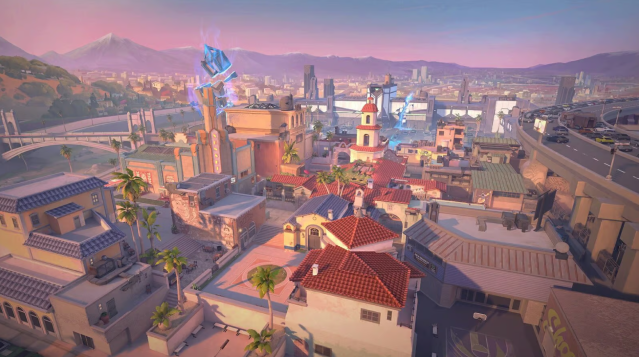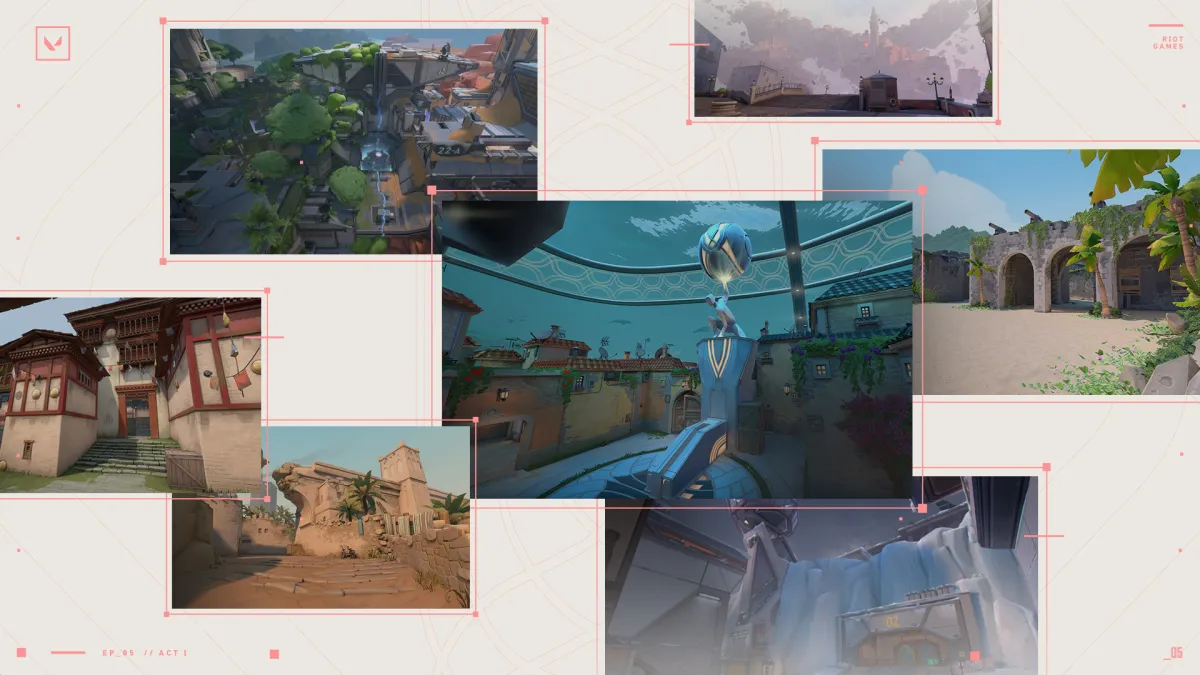As Riot Games continues to grow and update VALORANT, players can expect a wide variety of new content, including maps, to continue to be introduced. Now that the game has ten standard maps, a rotation helps players feel less overwhelmed by having to remember strategies for every map all at the same time.
VALORANT’s map pool rotation allows players to focus on just seven maps at a time, maintaining a high level of game knowledge required to succeed while preventing newer players from feeling like overwhelmed. The map rotation generally changes about once per Episode, but this can change as new maps are added, increasing the number of maps that are out of rotation to maintain seven playable in-game.
What are the current maps in the VALORANT map pool rotation?
Here are the current maps in the VALORANT map pool rotation:
- Sunset
- Breeze
- Ascent
- Haven
- Bind
- Split
- Lotus
With the start of VALORANT Act Seven, Episode Two, a revamped Breeze has returned, and Pearl and Fracture have been rotated out. After the conclusion of the main 2023 VCT season, Sunset, the game’s newest map, made its way into the competitive rotation.
Icebox has now been out of the rotation for the longest time of any inactive map, after being removed in patch 6.08. For the next rotation, players are likely to see it return to their regular queues.
Sunset

Sunset is VALORANT’s latest addition, a Los Angeles cityscape highlighted by a golden glow. The map is pretty straightforward, with no new gimmicks being introduced, but a hectic mid area. It has two sites and a large area in the middle of the map that is crucial for gaining control.
Breeze

This mysterious tropical island has been a thorn in the side of many players since its launch. Thankfully, Breeze recently got a massive rework that has eliminated many of the stubborn long sightlines that previously saw Chamber and Operator players running wild on the map. The rework still maintains the map’s feature characteristics but creates more opportunities for diverse playstyles and strategies.
Ascent

Unlike Breeze, Ascent is a map that has relatively stayed the same since VALORANT’s launch. Its unique feature is the switch-activated doors that lead into each site, though Sunset now also features a similar door, making Ascent less unique. The two maps are actually very similar in both aesthetics and strategy, with fighting for Mid control being a constant theme in any Ascent game.
Haven

Haven has established itself as perhaps VALORANT‘s most iconic map; it’s one of only a couple of maps that have yet to be rotated out or massively revamped. Haven’s classic feature is that it was the first map with three sites, which also sets it apart from other similar tactical FPS titles. The three-site layout typically plays into an attacker-side advantage, but the map has been around for so long that the strategies and possibilities are endless.
Bind

Bind eventually returned to the map pool later in Episode Six after a notable absence. The desert map’s signature element is its teleporters, which were reworked to offer a rejuvenated approach to the map. Playing closer angles is now a very viable strategy on Bind, with agents like Raze and even Harbor finding their voices here.
Split

Split has the distinction of being the first victim of the map rotation system. It was the first map to be rotated out, revamped, and returned to the active map pool. Split features tight layouts that support quick rotations, while also using differing elevations.
Lotus

Lotus is another three-site map that built on the success of Haven, but Lotus has its own gimmicks as well. The map is known for its set of two rotating doors operated by buttons on either side, plus a destructible door that connects the B site and A Main. The doors can be clunky to work around, and flanking is the name of the game on this lush forgotten city.
Why is there a map rotation in VALORANT?

VALORANT maintains its reputation as a live-service FPS title that continues to get tons of new content even over three years after its initial release. Riot hasn’t slacked off when it comes to releasing new agents, skins, and maps. Currently, VALORANT sees a new map added to the game about every six months, or every other Episode. The map rotation was only introduced in 2022 during the game’s fifth competitive Episode, once there were eight total standard maps. Team Deathmatch maps are not counted towards this total.
VALORANT maps design lead Joe Lansford explained back in June 2022 that after working with the esports team, surveying players, and talking with professional organizations, Riot will maintain a strict seven maps in the active pool.
Lansford continued by explaining how learning a new map in a tactical shooter can be one of the most challenging aspects of the game. Mastering a map is even harder, and having a “whole bunch of maps is a steep learning curve.” The team believes “seven is a nice sweet spot that offers both variety and mastery.” New players will have less to learn while diving into VALORANT, and existing players don’t need to learn a new map.



